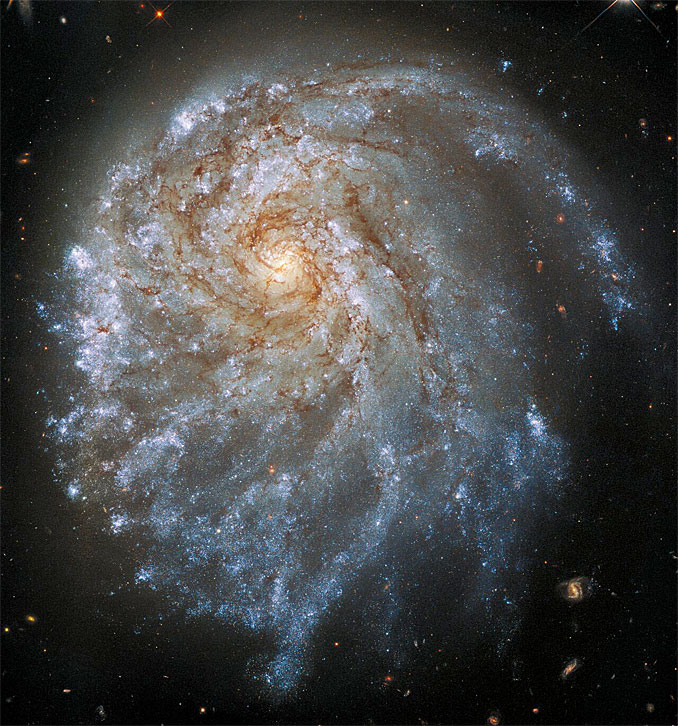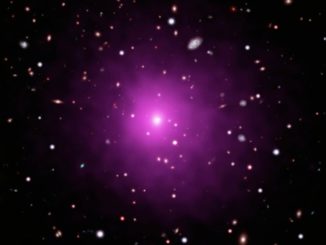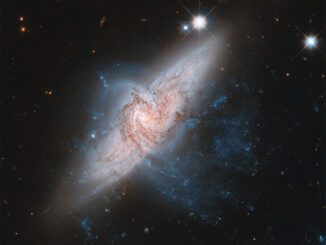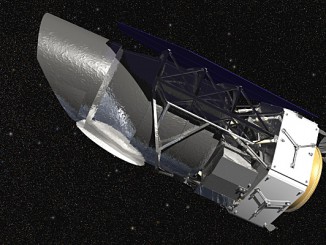At first glance, a galaxy known as NGC 2276 looks like a typical face-on spiral, albeit a bit lopsided. But as this spectacular photo from the Hubble Space Telescope shows, the gravity of a nearby galaxy is tugging on the right side of the spiral, pulling one arm away, while interactions with hot inter-galactic gas fuel rampant starburst on the left side as indicated by the bluish-pink regions. One of those regions is believed to be home for a 50,000-solar-mass black hole. NGC 2276’s appearance has earned it a place in the aptly named Atlas of Peculiar Galaxies first published by Halton Arp in 1966.




